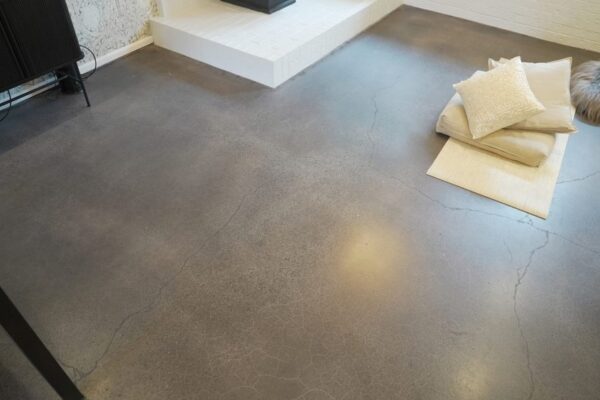Designing a home is more than picking paint colours or shopping for a nice sofa. It’s about shaping a space that feels like you. One that fits your lifestyle, makes you feel at ease, and reflects your personal story — whether that’s modern and minimal, bold and eclectic, or somewhere in between.
But how do you bring that home interior design vision to life when you’re not exactly sure where to start?
That’s where working with an interior designer comes in. And if you’re based in a dynamic city like Kuala Lumpur, where new homes, condos, and landed properties are popping up in every direction, having professional help can make all the difference, especially if you want your space to stand out from the crowd.
This beginner’s guide walks you through how to collaborate with an interior designer to create a home that doesn’t just look good, but truly feels like home.
Step 1: Think About How You Live
Before you meet with an interior designer or start building Pinterest boards, take a moment to reflect on your daily habits and routines.
- Are you someone who loves to cook and entertain?
- Do you need quiet corners for reading or working from home?
- Do you have kids, pets, or multi-generational family members to consider?
- Do you prefer open spaces or defined rooms?
Understanding your lifestyle helps shape the layout, materials, and design features that will support your day-to-day life. A home that reflects you is practical, functional, and built around how you actually live.
Step 2: Gather Inspiration (Without Getting Overwhelmed)
Here’s where mood boards, saved Instagram posts, and magazine clippings come in handy. Start gathering images that speak to you, not just furniture, but colours, textures, even travel photos or fashion, if they help define your personal taste.
Don’t worry about being too “correct” or on-trend. Just focus on what you’re naturally drawn to.
A few helpful prompts:
- What colours make you feel calm, happy, or energised?
- Do you prefer symmetry and order, or a more relaxed, lived-in feel?
- Are there any design styles you absolutely dislike?
Your designer can help translate all that inspiration into a cohesive look. But first, it’s important that they understand your visual language, and that starts with you showing what resonates.
Step 3: Understand the Role of the Interior Designer
Many people assume interior designers are only about choosing fabrics and décor, but their role goes far beyond that.
In a full design project, a designer can:
- Help develop the space layout and flow
- Plan lighting and electrical placement
- Suggest materials that match your needs and budget
- Coordinate with contractors and suppliers
- Source furniture and fittings
- Style and finish the space down to the final details
Think of your designer as your creative partner and your project manager. They’re there to help you avoid costly mistakes, make smart choices, and bring your vision to life in a practical, polished way.
Step 4: Be Honest About Your Budget and Priorities
One of the most important things you can do early on is have an open conversation about the budget.
Let your designer know:
- Your ideal budget range
- What you’re willing to splurge on (e.g. a feature wall, a statement sofa)
- Where you’re okay cutting back (e.g. basic cabinetry, simpler lighting)
Interior designers work with all types of budgets, but they can only help you make smart choices if they know what they’re working with. Setting expectations early helps avoid awkward surprises later.
Also, consider your timeline. Are you trying to move in by a specific date? Are there certain rooms (like the kitchen or the baby’s room) that need to be prioritised?
Step 5: Communicate Clearly — and Trust the Process
Designing a home is exciting, but it’s also full of decisions. The more you communicate openly, the smoother things will go.
Some tips:
- Give clear feedback, but stay open to suggestions
- Don’t be afraid to say what you don’t like — it helps narrow down your preferences
- Trust your designer’s expertise — they see the big picture, even when the space is still a blank canvas
There may be moments of doubt or delays, that’s normal in any creative project. But remember, the goal is a space that feels right for you, and that’s worth taking the time to get right.
Step 6: Add Personal Touches That Tell Your Story
Once the main pieces are in place, the furniture, lighting, and layout, it’s the little details that make a home feel personal.
Here are a few ways to bring your identity into the design:
- Display travel finds or family heirlooms
- Incorporate artwork that speaks to you
- Use colour schemes inspired by places you love
- Include elements from your heritage or culture
A well-designed home doesn’t need to be showroom perfect. In fact, the best ones aren’t. They’re warm, expressive, and filled with touches that reflect the people who live in them.
In a culturally rich city like Kuala Lumpur, mixing modern design with personal heritage is a beautiful way to ground your home in both your identity and your environment.
Final Thoughts
Working with an interior designer isn’t about handing over control — it’s about collaborating with someone who can help shape your ideas into a home that feels unmistakably you.
So if you’re just getting started:
- Think about how you live
- Collect ideas that feel like you
- Be honest about your needs and your budget
- Stay involved in the process
- And don’t be afraid to add the little things that make your space personal
In the end, the goal isn’t just a beautifully designed house. It’s a home that makes you feel seen, comfortable, and connected every single day.









